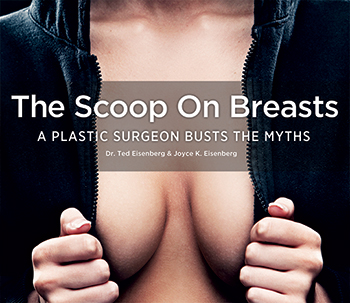Do Breast Implants Need to Be Replaced Every 10 Years?
Several times a week in consultation, I answer questions like these:
“I need to replace my breast implants after 10 years, right?” Wrong.
 “You did my breast implants 14 years ago and I’m still happy with their appearance, but a friend just had her 10-year-old implants redone because her doctor said she had to. Is that true?” False.
“You did my breast implants 14 years ago and I’m still happy with their appearance, but a friend just had her 10-year-old implants redone because her doctor said she had to. Is that true?” False.
Breast implants don’t have an expiration date. They only need to be replaced if they deflate (saline) or rupture (silicone), and they’re not fragile.
It’s no surprise that women believe that implants have a shelf life, but what causes the confusion? Breast implants come with a free lifetime product replacement policy. Manufacturers also offer a 10-year warranty to defray some costs of implant replacement surgery. When women hear this, some assume they have to replace their implants after 10 years.

Vintage refrigerator ad: The new 1967 Admiral Duplex comes in 4 sizes and has the 5 features women want most!
Don’t be misled by the warranty. Your refrigerator comes with a warranty, too, but you don’t automatically replace it when its warranty expires. You’ll probably keep it until it breaks down, unless you are redoing your kitchen and want a bigger or smaller model.
Women sometimes opt to replace their implants for bigger or smaller ones after childbirth, weight gain or a change of heart. I recently removed saline implants from a woman who wanted to go bigger after 23 years, and her implants looked the same as the day I put them in.
About 1-3 percent of the 300,000-plus women in the United States who have a breast augmentation each year eventually have surgery to replace implants that have ruptured or deflated.
The most common reason that an implant breaks is because it develops a fold in one spot. Over time, that fold might move back and forth, weaken, and then break, in the same way that a paper clip might break after it has been bent multiple times. I’ve found that if an implant doesn’t deflate from fold failure in the first 6-7 years, the likelihood of this happening seems to decrease, not increase, over time.
Implant replacement requires time off from work, exposes women to the risks of surgery and anesthesia, and may require some out-of-pocket expense. As far as replacing implants every 10 years, my philosophy is: “If it ain’t broke, don’t fix it.”
What happens when a saline implant breaks:
When the implant shell tears, the saline solution leaks out quickly, usually within a few hours, sometimes in a couple of days. The implant deflates like a balloon, and the breast generally returns to its original size. Your body absorbs the saline and then you urinate it out. The saline cannot harm you: It’s the same concentration as the salt water that makes up about 60 percent of the human body.
In Dr. Eisenberg’s experience, the saline deflation rate at 8 years is less than 2%. Read his latest article on this topic, which appeared in the international Aesthetic Plastic Surgery journal.
What happens when a silicone gel implant ruptures:
When the implant shell tears, the cohesive silicone gel inside sticks together and is unlikely to leak. You might not notice a change in breast volume or have symptoms, which is why it’s called a “silent rupture.” There could be no problem, or the ruptured implant could irritate the surrounding healthy tissue and cause pain, hardness or capsular contraction. Either way, the implant needs to be replaced. In 2020, implant manufacturers Allergan and Sientra reported a 10-year silicone rupture rate of ≈10%, while Mentor Corporation reported its 10-year rate at approximately 24%.
To check silicone gel implants for rupture, the FDA and manufacturers currently recommend that you get an MRI 3 years after surgery and every 2 years thereafter. This might not be covered by health insurance.




 CLICK HERE TO BUY
CLICK HERE TO BUY







